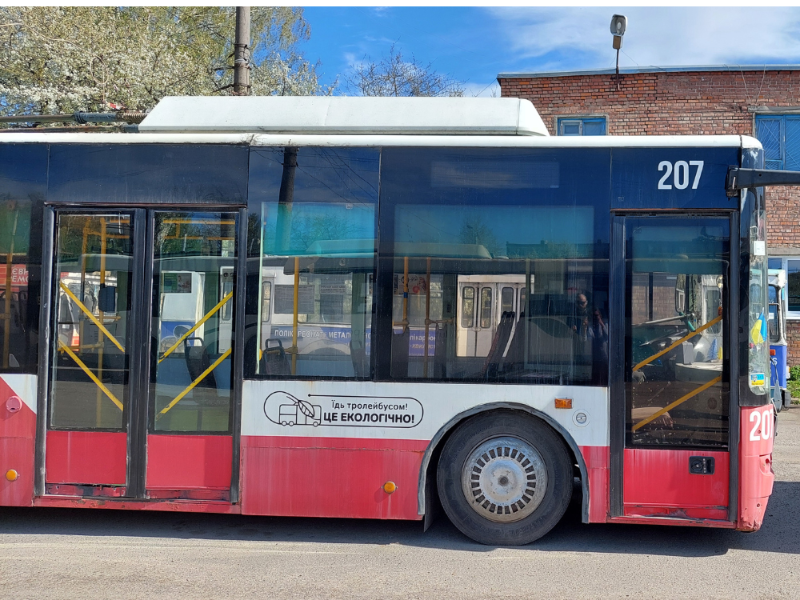
During 2023-2024, the public organization "Vision Zero" actualized the attention of all relevant parties to the field of electric public transport as one of the main means of sustainable urban mobility.
Every year, the issue of simply maintaining its work even at the current level becomes more and more urgent. However, in order to improve the quality of life, in particular during the period of post-war reconstruction of cities and the economy of the state, it is necessary to comprehensively improve the work of public transport, and the foundations for this should be laid now.
From our experience, it is important to combine analytical work with studying the situation on the ground. Therefore, among their other activities, the members of the public organization made familiarization visits to four cities - Lutsk, Khmelnytskyi, Kyiv and Rivne.
Since the beginning of the full-scale war, the electric public transport industry has faced unprecedented challenges. Remotely studying the problems and needs of utility carriers, of course, we can draw some general conclusions about the acute shortage of drivers and service personnel, as well as outdated infrastructure. However, the current situation of each city is unique, as are the approaches to work, despite the current problems and ways to solve them.
Everywhere, except Kyiv, we also managed to communicate with the representatives of the customer of transportation in cities — the local transport departments or the transport department in the Department of Public Utilities. Everyone has similar challenges and achievements.
For example, in Lutsk, the head of the local transport department Viktor Glavichka told about a typical situation in his city, which is characteristic of most cities: suburban buses, which should go only to the main bus stations, drive along the main highways of the city and into its central part, making boarding / disembarking passengers wherever you want. This leads to an outflow of trolleybus passengers and a greater load on the street-road network and the formation of traffic delays - traffic jams.
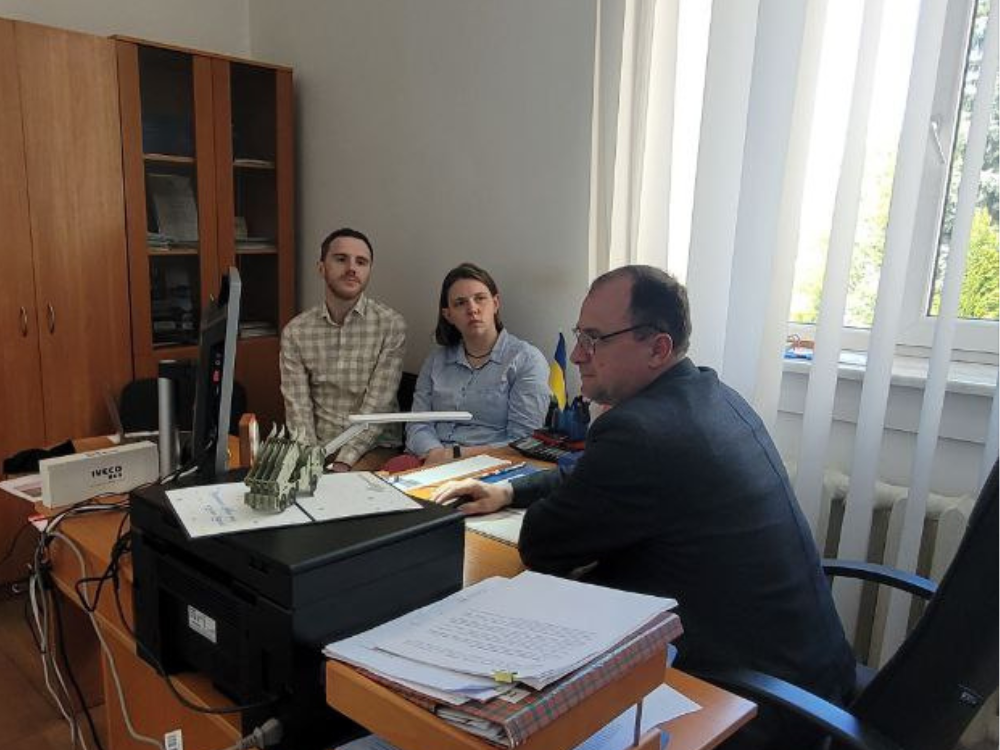
Photo: Meeting of the NGO "Vision Zero" with the head of Lutsk transport department Viktor Hlavichka
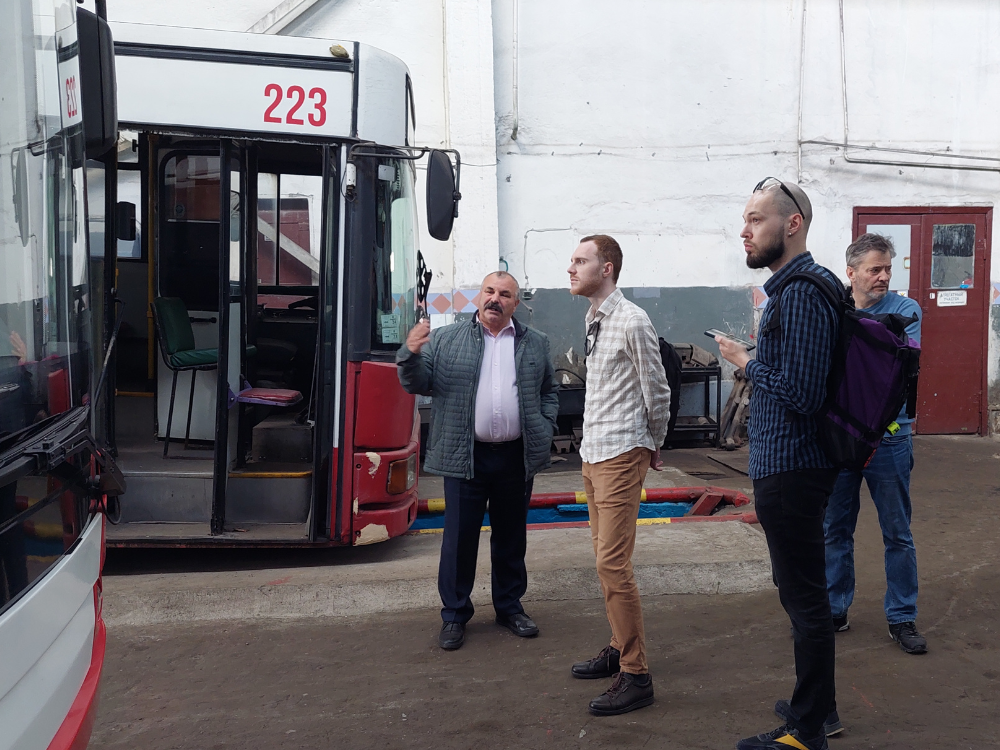
Photo: Meeting of the NGO "Vision Zero" with representatives of the KP “Lutsk Electric Transport Company”
In Khmelnytskyi, the situation with non-urban transportation is similar, but the specifics are somewhat different. Bus stations are located in the central part of the city, not on the outskirts. According to the head of the Khmelnytsky City Transport Department Kostyantyn Kostyk, the city really needs them to be located outside the central part of the city: "International and intercity buses overload the existing transport network (as in Lutsk — ed.). These bus stations are privately owned. The city authorities tried to come to an agreement with the leaders, but there was little progress."
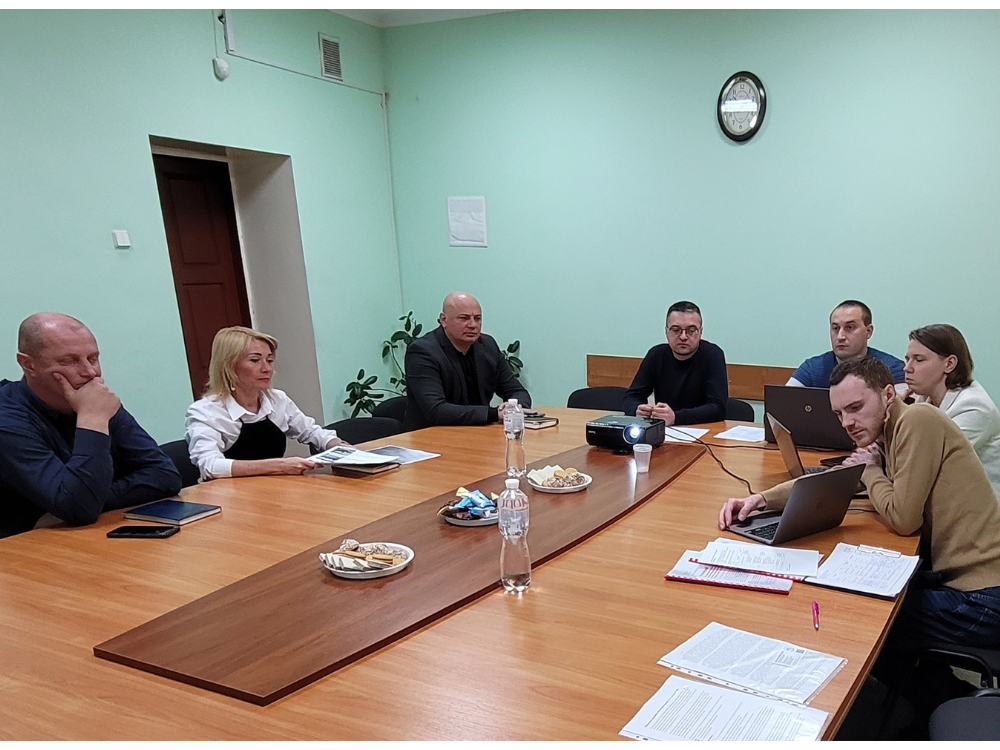
Photo: Meeting of the NGO "Vision Zero" with representatives of the Khmelnytskyi City Transport Department and KP “Electrotrans”
As a result of hostilities, some cities lost their communal buses. This happened for reasons such as city defense (Chernihiv and Kyiv), or when they were transferred to the needs of the Armed Forces (all cities). Therefore, during the years 2022–2024, a number of European cities began to transfer hundreds of their used buses of a large class to Ukrainian cities to support urban passenger transportation. The cities of Lutsk, Khmelnytskyi, Kyiv and Rivne are no exception. However, the legislation of Ukraine was not ready for their operation: currently, it is still prohibited to use such buses for the purpose of making a profit, that is, with a set fare, because they were handed over without a specified purpose. According to Article 201-2 of the Criminal Code of Ukraine, "illegal use for profit of humanitarian aid, charitable donations or free aid is punishable by imprisonment for a term of five to seven years with deprivation of the right to hold certain positions or engage in certain activities for a term of up to three years and with confiscation of property".
That is why, among the cities we visited, Rivne and Khmelnytskyi use such buses to provide only social transportation. All utility companies of Ukraine and in some places even mayors have appealed to the Ministry of Infrastructure and other government officials with a request to implement a number of changes in the relevant legislation as soon as possible, but there is still no positive result.
Despite the hardships that cities face during a full-scale war, we saw during our visits that they are trying to support the electric public transport industry and urban mobility in general. The Acting Mayor of Rivne, Viktor Shakirzyan, stated at the meeting that "the comfort and safety of the residents of the community is above all. That's why we focus on modern transport that has an autonomous drive and a low floor." Also, the city is currently at the stage of developing a Sustainable Urban Mobility Plan, where urban public transport, in particular electric, is an important aspect.
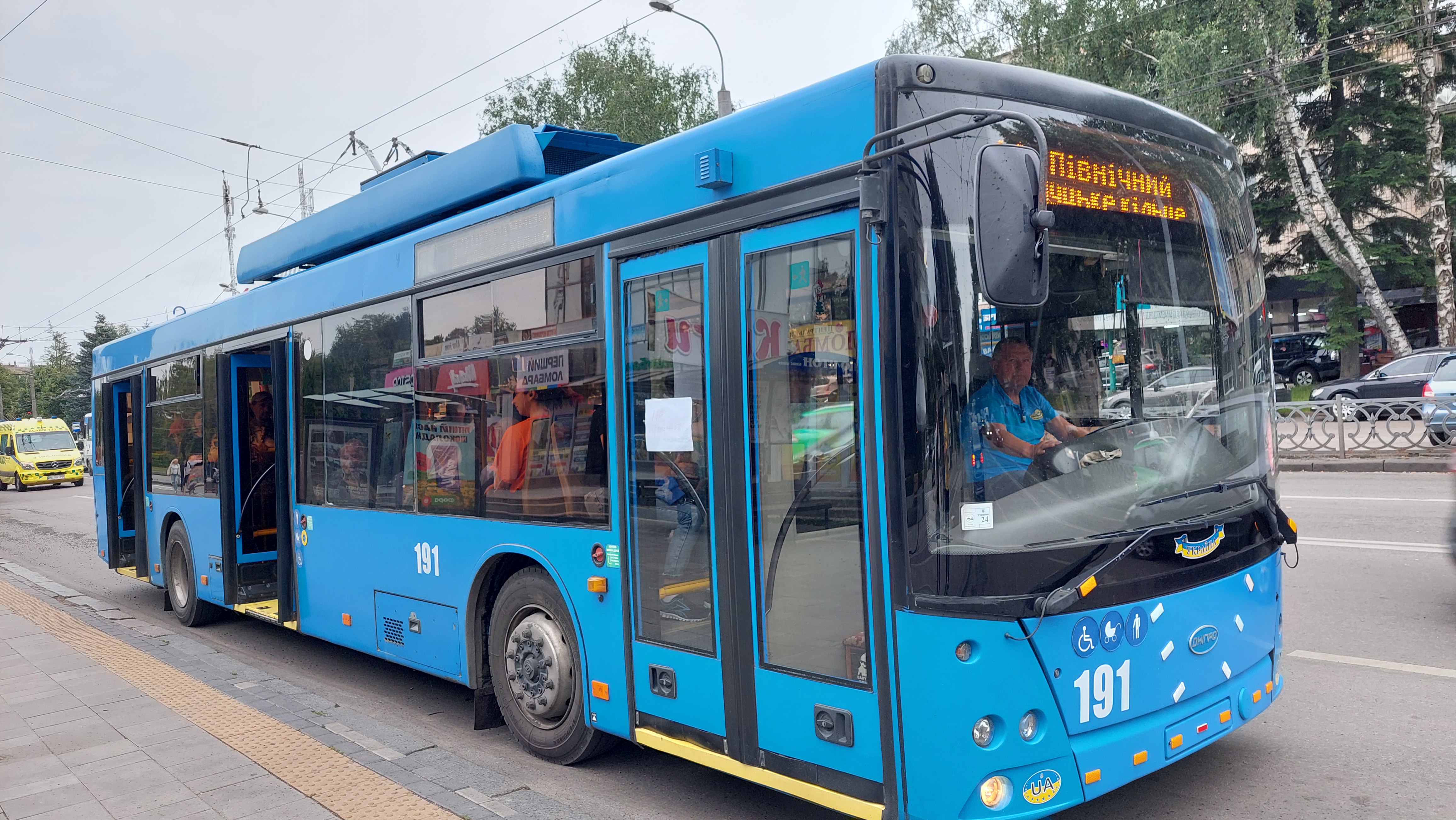
Photo: Low-floor trolleybus "Dnipro T-203" in the city of Rivne
In addition to communicating with representatives of relevant local self-government bodies, during our visits to Ukrainian cities, we visited trolleybus depots and tested the payment system directly in transport. For example, in the city of Lutsk, an electronic ticket (full-value non-cash fare payment) is fully implemented by means of transport, bank cards and the scanning of a QR code generated in one of the banks. The project was implemented with the help of the private operator "CITY CARD SYSTEM" LLC. By the way, the same operator was also involved in Khmelnytskyi. There, the electronic ticket began to operate in trolleybuses from February 1, 2024 (in a test mode), and from May 15, 2024 - in a test mode in communal buses, and from July 15, 2024 - in electric transport using only electronic methods of fare payment (cashless ). In a few months, the system will be scaled to public transport of all types and forms of ownership.
Both cities did not spend money on the implementation of this project. Simply, the operator/investor takes a commission of 10% from each trip. Now the equipment that ensures the operation of the electronic ticket has been transferred for free use. After the conclusion of the contractual terms, it will become the property of the transport customers.
In Kyiv, funds were raised from the city budget for the introduction of an electronic ticket, the system is valid in all types of public transport.
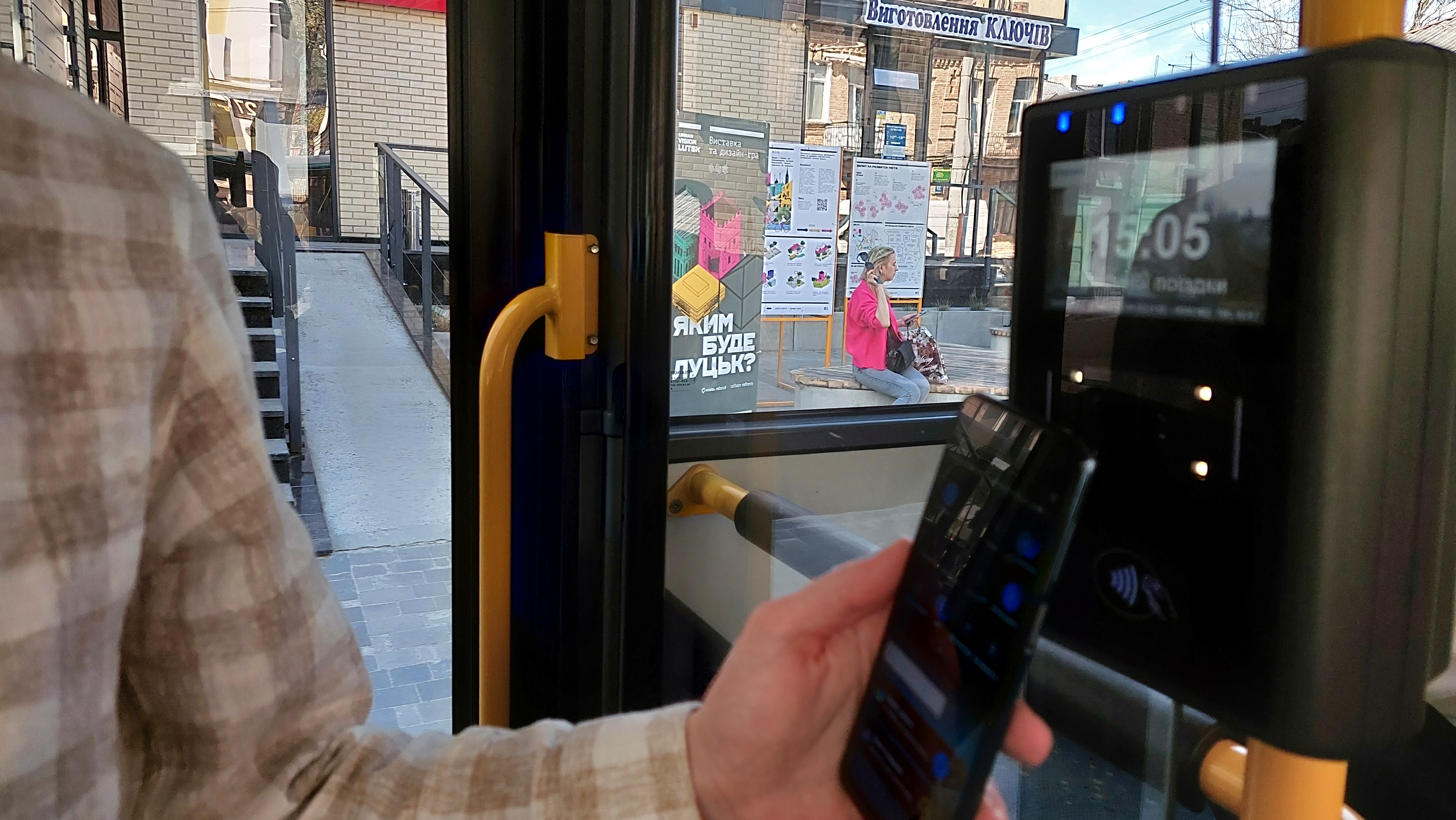
Photo: Contactless fare payment on a trolleybus in the city of Lutsk
But during the visit to Rivne, we learned that currently payment is made there only in cash and through the QR code of one of the banks. However, the city intends to introduce full-fledged cashless payment, currently studying and discussing ways to do this.

Photo: Ticket after paying the fare to the conductor on the trolleybus in the city of Rivne.
During the visits, we saw how acute the staffing crisis is for utility transport companies. Thus, Serhiy Lytvynov, director of transport at KP "Kyivpastrans", said that the company lacks drivers the most. "We now have about 1,550 of them for the production of 760 units of all types of transport. But we lack 300 drivers to fully support this issue."
According to Anatoly Lopaty, head of the Energy Supply and Communication Service of KP "Kyivpastrans", drivers are not the only problem. For example, according to the staff list, there should be 610 employees in his service, but in fact - 406.
All enterprises also have in common that there is a shortage of bus drivers, since women are more willing to work on trams and trolleybuses. And for buses, even large-class ones, no.
While we were preparing this material, some changes began. For example, on June 24, 2024, the Ministry of Infrastructure officially announced that together with the UN Women's Office in Ukraine, it was agreed to implement a project to train female drivers in the field of bus passenger transportation. The project will start soon in cooperation with several cities. This was discussed in the publication " Ukraine is launching a project to train women for the profession of city bus drivers".
However, the situation is not much better at other enterprises, only the number of workers who are missing is different. But the percentage ratio is about the same. At the KP "Lutsk Electric Transport Enterprise" we were informed that they lack 30 trolleybus drivers, and at the KP "Electrotrans" in Khmelnytskyi, 30 workers were mobilized for service in the Armed Forces of Ukraine.
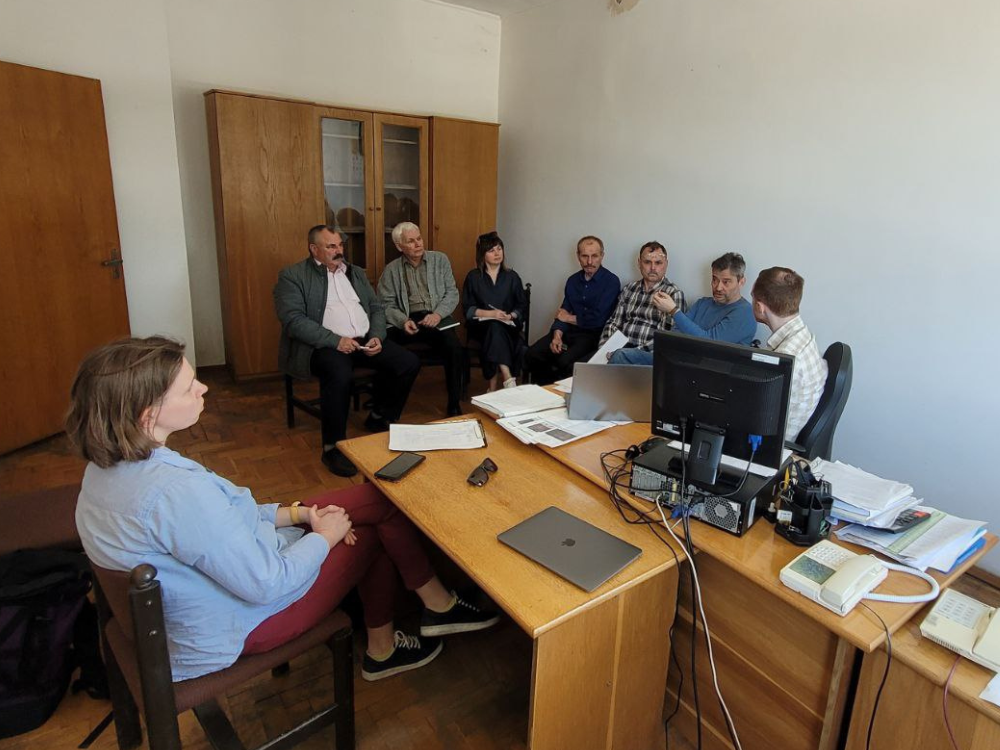
Photo: Meeting of NGO "Vision Zero" with representatives of KP “Lutsk Electric Transport Company”
According to the legislation, 50% of the employees of public transport companies are subject to reservation from mobilization for service in the Armed Forces of Ukraine. In practice, this percentage does not always reach such a figure, since the process is too bureaucratic, registration and final approval take a long time, despite the fact that utility companies perform their part of the work promptly. And while all this is happening, workers are being mobilized. But even if 50% of the reservation was made, it is still not enough to maintain the normal operation of such a critical industry for the country as public transport.
During the round table " Save public transport: 10 steps were named in Lviv, how the state can improve its functioning ", which was organized by the NGO "Vision Zero", experts developed a list of measures that are urgent to implement in order to solve this problem:
- training and work of trolleybus and bus drivers from the age of 18;
- making changes to the regulatory framework for a simplified procedure for involving trolleybus drivers in driving buses and vice versa;
- extension of working hours of drivers until the end of martial law;
- provision of a mechanism for booking drivers from mobilization within an acceptable time frame and as a percentage of the number of employees.
After all the visits, we were once again convinced that many problems in the field of urban transport are common to cities. Somewhere one prevails, somewhere another. But in the end, all of them significantly affect the quality of service provision to residents. The most urgent thing for companies is the need to change the reservation procedure from mobilizing employees of utility companies-carriers and to give them the opportunity to switch to the payment model for the performance of transport work by buses in cities as soon as possible.
A number of processes at the state level are currently ongoing, and changes are being prepared. However, our task is to unite. The result can be achieved only through the joint efforts of specialized departments and offices, carriers and the public sector.
We sincerely believe in this.
